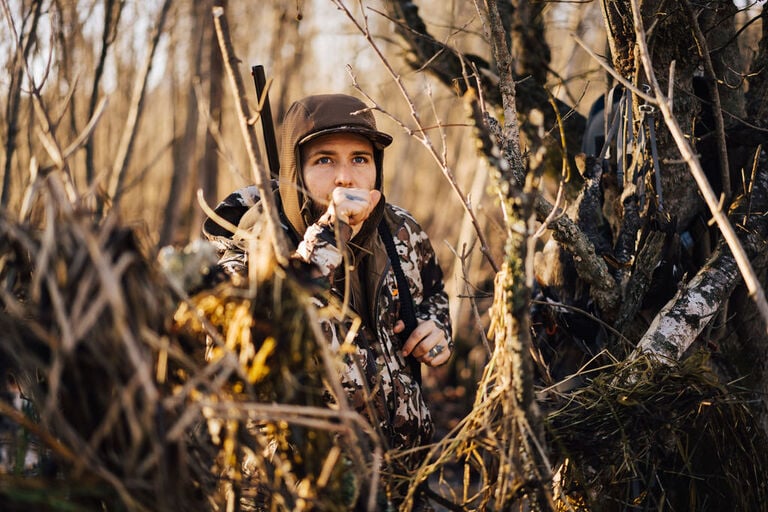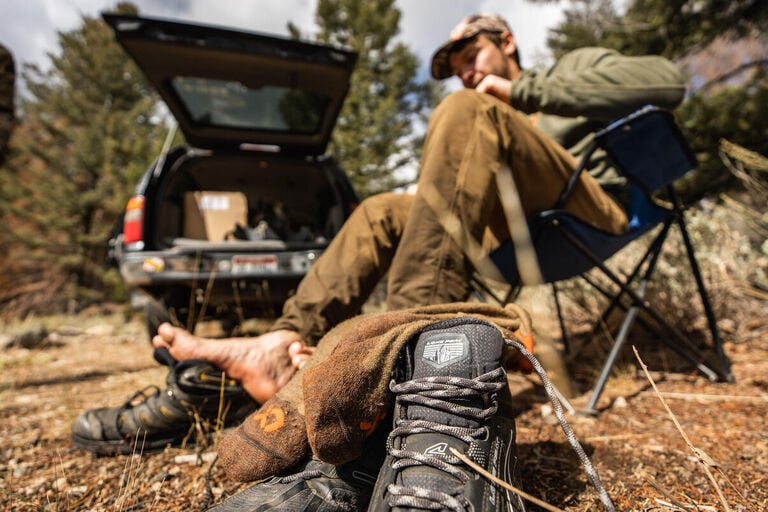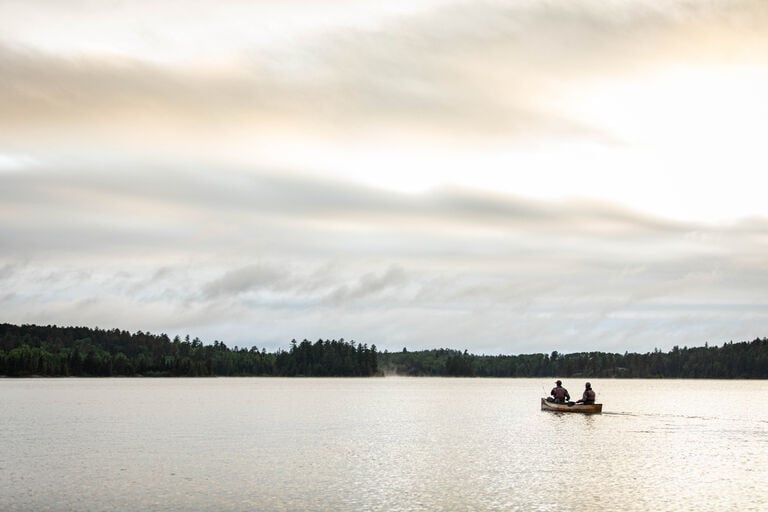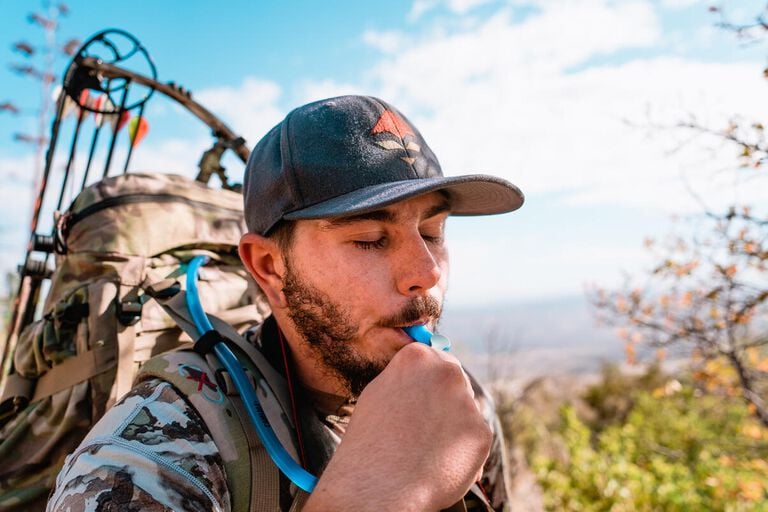FOWL CONDITIONS: A DEEP DIVE INTO LAYERING FOR PUBLIC LAND WATERFOWLING
Posted by Ford Van Fossan on January 22, 2021


Public land waterfowling in central Idaho requires a versatile layering system. Though I mix in big river and field hunts as often as I can, I largely duck hunt small water. The majority of my hunts start with walking or canoeing into local backwater sloughs and spring creeks. These active hunts demand a versatile clothing system that allows me to paddle a mile upstream into a spot without sweating out. At the risk of stating the obvious, perspiration will not help you stay warm on a long cold hunt.
The length of our season places additional demands on a clothing system. We can hunt ducks and geese from October to the close of January; from balmy fall afternoons to iced-over, single-digit mornings. You have to be prepared for a range of conditions if you hope to find success from civil twilight on opening morning to the end of shooting light on the last day.
A common denominator in almost all of these hunts is that you will get wet. Therefore, I stick to merino wool baselayers because they are warm and relatively comfortable when wet. This quality is a real asset to the amphibious waterfowler especially when you spill a pint of water into your waders reaching for that farthest decoy. I generally start my system with one of the most versatile pieces we make, the Kiln 250 Merino-X Hoody. This layer might just be my favorite First Lite product. It performs equally as a midweight second layer for September elk hunts as it does as a heavy-next to skin base for the duck blind.



Next, I rock the Klamath Grid Fleece. This versatile second layers dries quickly and boasts a strong warmth to weight ratio. Overtop of this piece, I put on our Catalyst Soft Shell Vest. This versatile vest is water-resistant, and its interior 37.5 fleece insulation is not crushed by jackets worn outside of it. It also allows for plenty of underarm airflow on long hikes or paddles to small water duck holes.
These three pieces are the core of my waterfowl system from October to January. The may be all I wear in the early season or my setup for a long paddle or hike into a spot in colder temps. However, I vary my outerwear depending on the conditions. In the early season, I typically stash the Uncompahgre 2.0 Puffy Jacket in my blind bag. Like the Kiln Hoody, this piece extremely versatile piece finds its way into my pack for everything from September elk overnights to January chukar hikes. The Uncompahgre is perfect to cut the evening chill in the marsh in the early season.
As the season progresses into December and January, the Chamberlin Down Jacket finds its place in my pack. This thing is like a sleeping bag and perfect for the season’s coldest days. Though down is typically not the best for wet environments, the coat boasts a solid water-resistant outer layer and hydrophobic 37.5 active down insulation. Therefore, I don’t think twice about throwing the Chamberlin in the canoe, especially since it is compressible enough to fit easily in my small blind bag. On the coldest days, I will layer this jacket over the Uncompahgre for maximum insulation.



Though I generally simply rely on water-resistant face fabrics of the Uncompahgre and Chamberlin for precipitation, if truly poor weather such as heavy rain or wet snow is expected, I will also bring a SEAK Stormlight Rain Jacket. This burly, 3.5-layer shell has more in common with modern breathable waders than your grandfather’s slicker and can more than stand up to any precip Idaho can throw at it.
As it always seems that there is micro-leak somewhere in my waders, I wear merino wool bottoms and socks that are still warm even when they get a touch damp. In the early season, these are usually our Fuse 200 Aerowool Long Johns. As the season progresses, I swap these out for the warmer Furnace 350 Merino-X bottoms. I often wear the Obsidian Merino Pant on top of these baselayers. I do this because it gives me a bit of extra insulation and, equally importantly, ensures I am not loading a canoe or gassing up the truck in just my skivvies. Foot-wise, I wear our warm and lofty Zero Cold Weather Crew socks on every mission.



My hunts rarely involve a blind; most often I am tucked into reeds, willows, or sagebrush relying heavily on camouflage and being still to hide me from circling birds. Therefore, my headwear is oriented around concealment. I typically rock a ball cap under an insulating Tag Cuff Beanie. I really like a brim for hiding my face from circling waterfowl and blocking the sun for those days when you can’t help but set up staring right at that closest star. I also wear a neck gaiter, often worn up over my nose for concealment. Though this obviously is an issue for calling, on small-water hunts with smaller groups of ducks, I typically keep calling to a minimum and often placing more value on hiding my face effectively without the added concealment of a blind.
Though our Midweight Merino-X neck gaiter is certainly warmer, I often opt for the lighter 150 Aerowool Gaiter because it breathes better. For whatever reason, I hate the feeling of moisture that can build up in front of my face with a heavier gaiter. For single-digit mornings, I will pack the Tundra Cold Weather Balaclava. This shearling wool accessory adds a ton of warmth for the coldest days in the marsh.
Finally, I bring two pairs of gloves. Paddling in and messing with decoys, I wear the Alpine Cold Weather Glove. Though not seam-sealed, these gloves are constructed from rain jacket fabric and maintain dexterity. Once the decoys are set, I switch to the Talus Fingerless Gloves for shooting, largely keeping my hands in my wader muff pocket when ducks are not out front.
Public land waterfowling in central Idaho is not easy. Pressure, inconsistent bird numbers, and wide-ranging weather conditions mean that a limit of ducks is hard-earned and always worth celebrating. This clothing system keeps me comfortable across hikes, long paddles, sunny bluebird afternoons, and miserably cold mornings.
Ford Van Fossan is First Lite's Conservation and Content Manager. He grew up waterfowling on the Chesapeake Bay in Maryland and killed his first goose at nine. You can see Ford's public land waterfowling kit here.
Photography by Ben Matthews.








